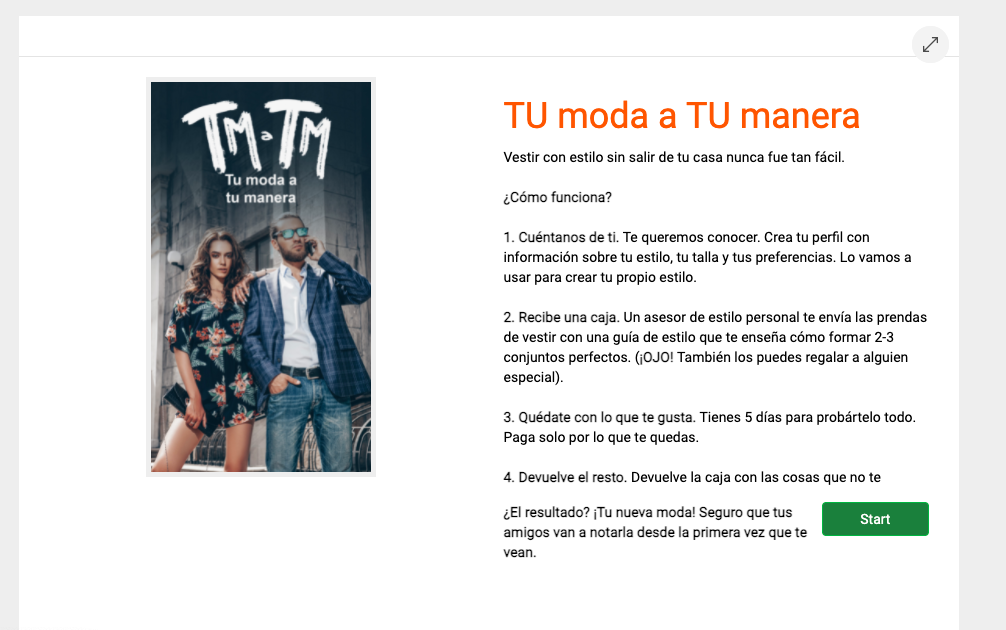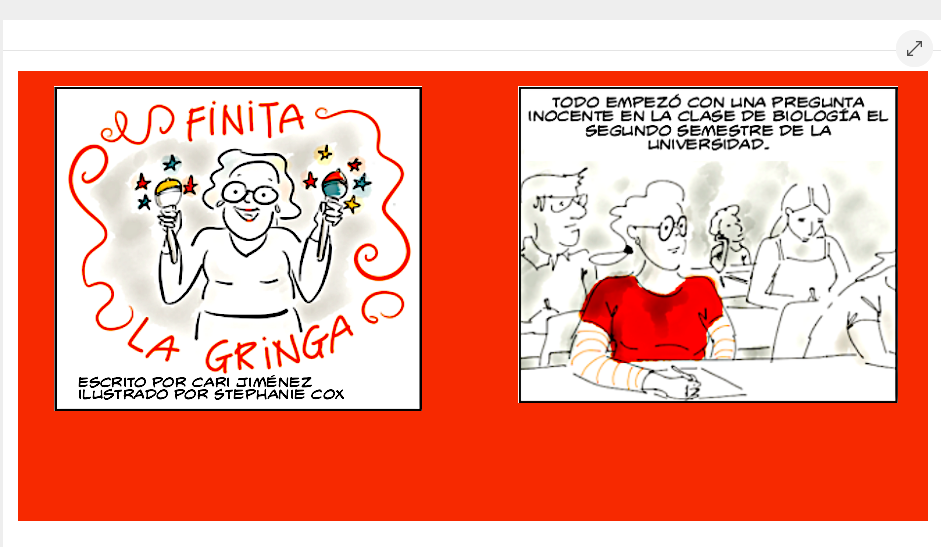Spanish is a wonderful language. My love for the language keeps growing as I learn more of it. This level was quite more tedious than the previous ones as we had too many quizzes, tests for the modules, lingro, talk abroad, and more. We learned about clothing, art, how to describe a variation of colors, the different types of art, how to construct sentences, the past, the future, and more. We also had many activities in which were required to speak to fluent Spanish speakers and the professor. We started the course with “La Ropa”, in this unit we talked about the various items of clothing. In the next unit, “Cómo era ese lugar?” we talked about ecotourism and the environment. In unit 13, we talked about immigration. Unite 14 presented us with the past and history focusing on how to construct sentences in the past. Unit 15 has a relation to unit 14, as this unit also focuses on the past but specifically on reinterpreting the past. The final unit focused on constructing sentences in the future tense. All units provided a plethora of vocabulary and grammar. It was an interesting learning experience overall.
Exploring Culture
Every culture is diverse but often times you find that despite the differences, you can also spot similarities. We looked at different cultural topics such as the Body positivity movement, Environmental challenges, Immigration trends in Latin America, Artistic expressions and popular artists in Latin America, Influential Authors, and Technology and Communication in Latin America.
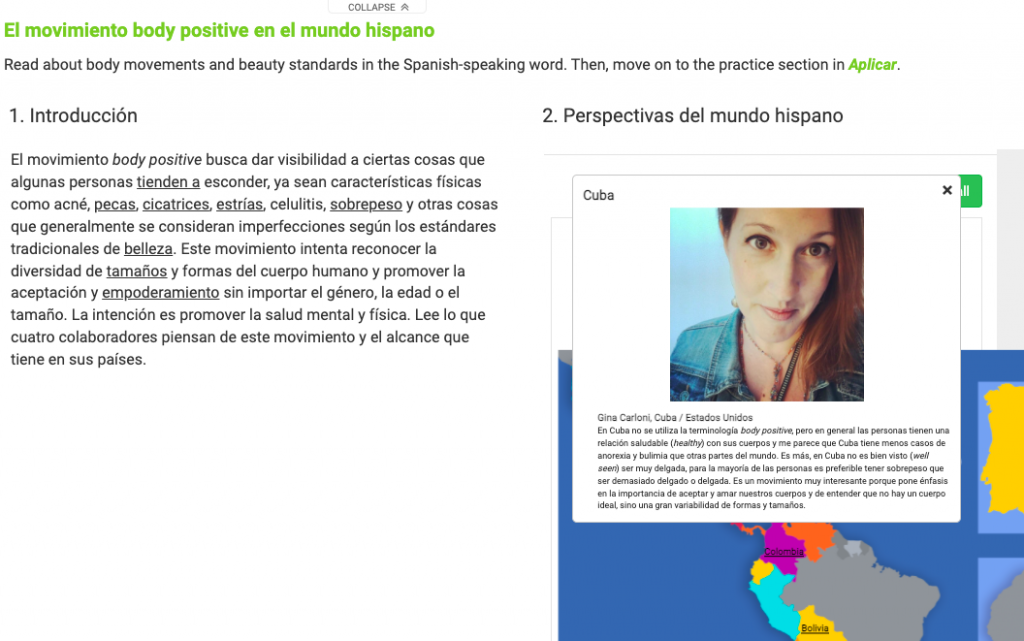
One of the similarities that I found between Latin America and other regions also considered third-world regions are that we experience a lot of Environmental challenges, such as heaving rain, flooding, deforestation, and list that could go on. A difference that I saw between the Hispanic culture and my culture is that we don’t have a movement for body positivity. It was so interesting to also find out that there are differences among regions in the Hispanic community. It was refreshing to learn about the different lifestyles and cultures.
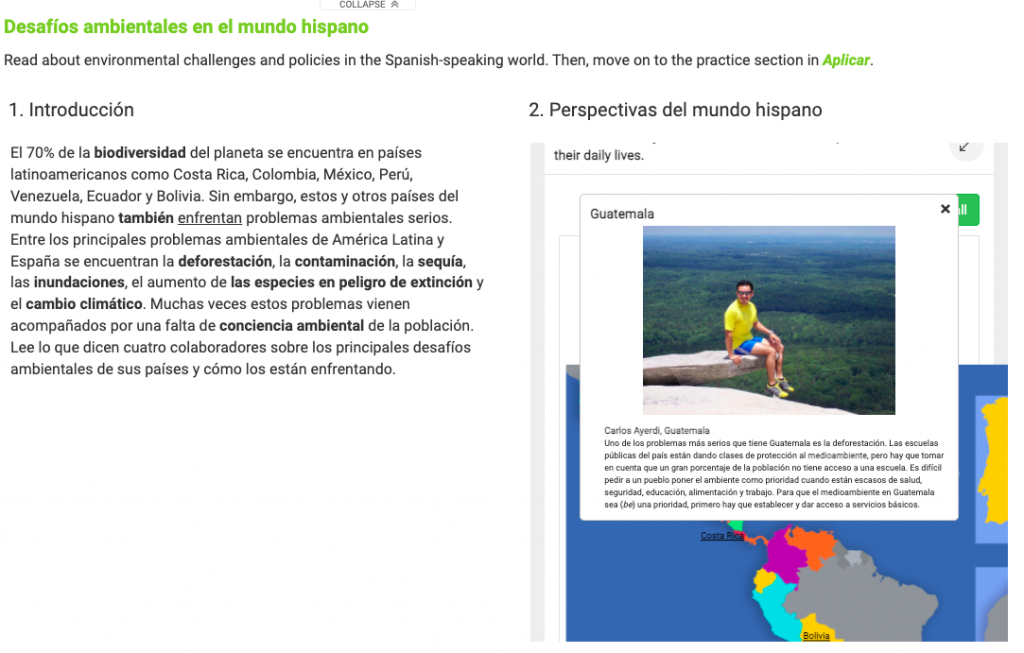
Engaging in Communities
It is imperative to engage in our communities, on all levels, be it locally or globally. Engaging in your community creates a sense of awareness in an individual. It helps us as people understand how to interact with different people. It creates openness, respect, and appreciation for others.
Throughout this course, I engaged in my class community by posting on discussion boards and replying to posts made by my classmates. Everyone had their input to give, some different and some the same but despite that the atmosphere was respectful. It was very interesting to read others’ discussion board posts. It was an exciting experience.
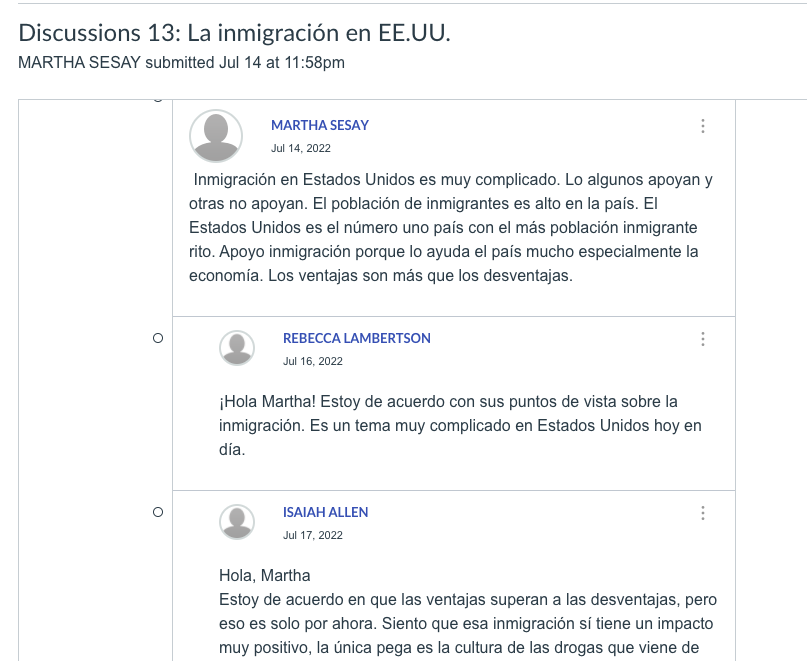
Interpersonal Communication
The entire class is based on interpersonal communication. One of them was with one of them was one of the TalkAbroad sessions I did. I spoke with my partner who is a native Spanish speaker and we discussed fashion in both our countries. We had discussion boards with every module in which we were required to post in Spanish and reply to posts made by our classmates also in Spanish. I think this was the most helpful part because it helped us learn from each other.
Below is the first TalkAbroad session that I had. The conversation was very nice and my partner for this activity (a native speaker) tried her best by using different words accompanied by actions to help me understand her.
With each activity, I saw the growth that I experienced. I learned new vocabulary and forms of expressions. It was definitely hard to understand what was being said straight away but recognizing familiar words helps in understanding the context of what is being asked or talked about. I did make a lot of mistakes which is why I understand that listening should be an area that I should improve on.
Presentational Speaking and Writing
On the list of activities that were undertaken, some of them were conducting research and giving a presentation with the results from the conducted search. In one of my research, I chose the country Colombia and wrote about a popular artist in the country and their most famous piece.
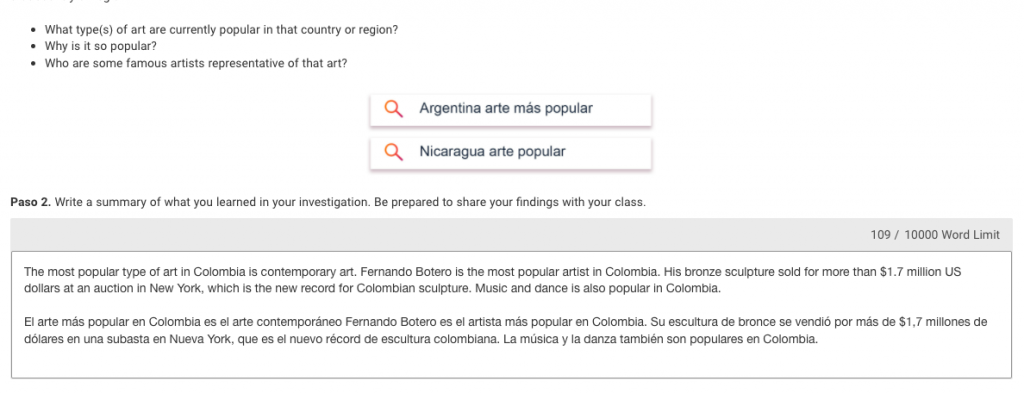
Interpretive Listening and Reading
We had lots of interpretive listening and reading activities from all units. So far, I’ve tried to listen to music, tv shows, and some Spanish speakers I come across and try to interpret the language. It is a little challenging because of how fast the speakers are since they are fluent but I manage to grasp some words here and there.
It was very interesting trying to figure out certain words due to the pronunciation differing from the spelling. From units 11-16, multiple audios were presented to complete activities. We also had two TalkAbroad sessions and a final oral with the professor. It was not easy to understand everything for the talk abroad sessions and final oral, but I tried to put bits and pieces together and look for context clues. Many texts and short stories were presented in this course in which we had to use our interpretive skills.
